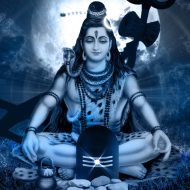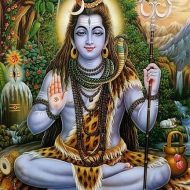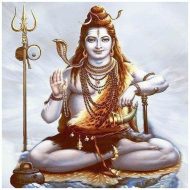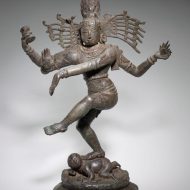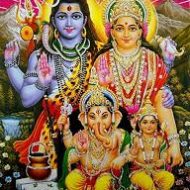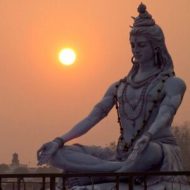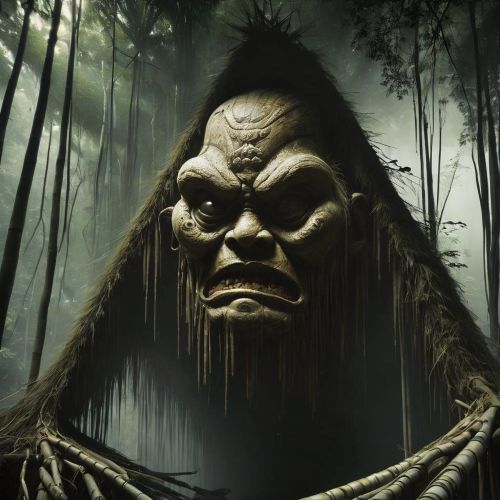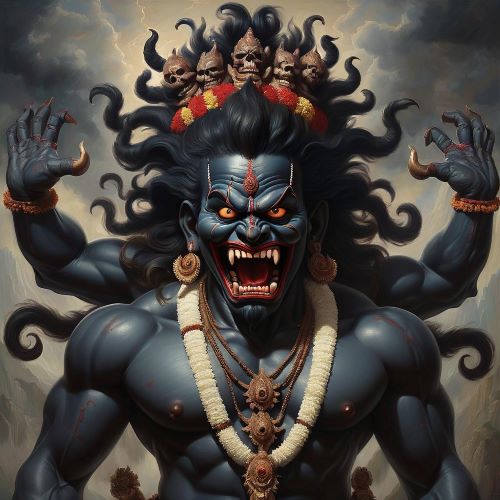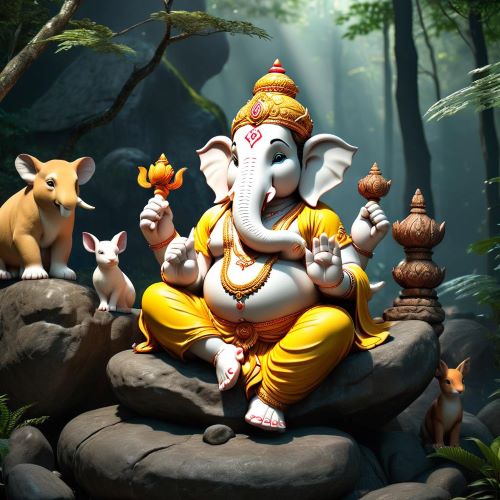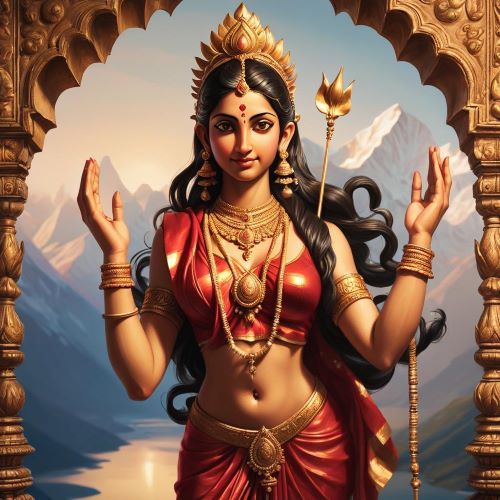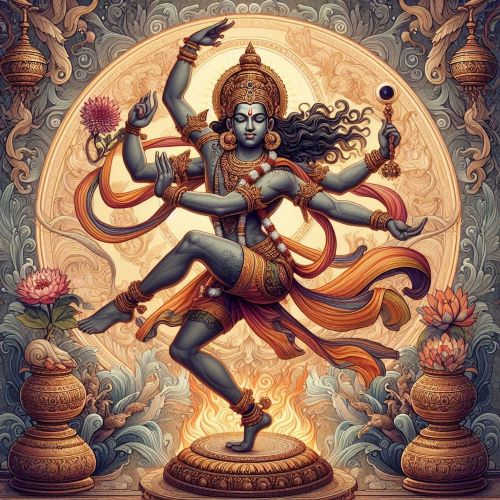Shiva : The Destroyer
Listen
At a glance
| Description | |
|---|---|
| Origin | Indian Mythology |
| Classification | Gods |
| Family Members | Parvathi (Wife), Ganesha (Son), Karthikeya (Son) |
| Region | India |
| Associated With | Destruction, Trinity |
About Lord Shiva or Mahadev
Introduction
Shiva also known as Mahadeva is one of the main deities of Hinduism. With pre-Vedic roots, Shiva is an amalgam of various non-Vedic deities, such as the Rigvedic storm god Rudra. In the Trimurti, which includes Vishnu and Brahma, Shiva is referred to as the Destroyer. He is the Supreme Lord who creates and protects the universe. In the Shakta tradition, a goddess is referred to as the Devi, with Parvati as the equal partner of Shiva.
There are many depictions of Shiva in both benevolent and ferocious aspects. In his noble aspects, he is depicted as a wise and ascetic living on Mount Kailash with his wife, Parvati, and their two children.
Shiva is a deity worshipped in various Hindu countries and traditions like India, Nepal, Sri Lanka and Indonesia. He is depicted with a serpent around his neck, with the moon’s crescent moon and the holy river Ganges flowing from his forehead.
Physical Traits
There are various forms of Shiva, as a family man with his wife Parvati and son Skanda, the cosmic dancer Nataraja, a naked ascetic, as a yogi, and also as a lower caste person accompanied by his dog, Bhairava. He is also often depicted as the androgynous union of himself and his wife Ardhanarishvara.
Images of Shiva depict him as white or as the ashes of corpses that are smearing his otherwise dark skinned body. He is usually portrayed with a blue neck due to holding the poison from the churning of the ocean and a crescent moon surrounded by his matted or dreadlocked hair that is adorned with a pair of jatra mats and the Ganges. He also has a third eye which gives him inward vison and also capable of destroying everything in sight when he opens it. He wears a garland of skulls and a serpent around his neck. He is shown seated on a deerskin and holds a trident, a small hand drum called damru or a club with a skull at the end.
Family
Sati, Shiva’s wife, was often incarnated as Kali or Durga. She was the daughter of Daksha, who did not approve of her marriage to Shiva. Angered by this, she threw herself on the fire which angered Shiva who created 2 demons, Virabhadra and Rudrakali who wrecked havoc on earth. After being pacified by other gods, he called off the demons and married Sati who was reincarnated as Parvati.
Shiva had a son named Ganesha, who was created out of clay and earth to protect his mother. However, one day, while he was guarding the room where she was bathing, he found the boy. Not believing that he was his son, he called the demons and persuaded them to behead him. On realising his mistake, he sent his followers to find a replacement head which happened to be that of an elephant. he then revived the boy who became the elephant headed god Ganesha. His other sons include Skanda or Karthikeya, the God of war and Kubera, the God of wealth and treasures.
Other important people in Shiva’s repertoire include the river goddess Ganga whom he offered refuge in his hair to prevent the human civilization from getting destroyed and Nandi, his mount or constant companion.
Other Names
There are many names given to Shiva, such as Viswanatha, Mahandeo, Shambhu, Trilochana, Devendra, and Subhankara. In Shaivism, his name is often referred to by epithets such as “Great god” and “Great lord.”
Powers and Abilities
Shiva although described as the Destroyer is not a negative character in any sense. In Hindu mythology, destruction is not a negative end to anything. It actually gives birth to new things and helps in the cyclical concept of time that is unique to Indian mythology and the Hindu religion.
Shiva’s powers are absolute and endless. He is often credited as being one of the orchestrators of the creation of everything due to his requirement to bring to an end many aspects of the world which will give rise to new beginnings.
Worship and Modern Influence
Shiva is widely worshipped across India and many countries where Hindu religion is practiced. Many festivals and temples are dedicated to Shiva and his followers are known as Shaivists or those who follow Shaivism (a sect of Hinduism that worships Shiva as the Supreme God).
Related Images
Source
Doniger, W. (1973). The Origins of Evil in Hindu Mythology. University of California Press.
Kramrisch, S. (1981). The Presence of Siva. Princeton University Press.
Zimmer, H. R. (1946). Myths and Symbols in Indian Art and Civilization. Harper & Brothers.
White, D. G. (2006). Yoga in Practice: Shiva’s Role in the Ascetic Tradition. History of Religions, 45(4), 308–325.
Lorenzen, D. N. (1991). Shiva and the Rise of Shaivism. Indian Historical Review, 16(1), 115–127.
Mark, J. J. (2019). Shiva. World History Encyclopedia. Retrieved from https://www.worldhistory.org/Shiva/
Britannica. (n.d.). Shiva: The Destroyer. Retrieved from https://www.britannica.com/topic/Shiva-Hindu-god
Frequently Asked Questions
What is Shiva the God of?
In Indian mythology Shiva is known as The God of Destruction. He is the Master of Medicine and Poison. He is also known as the Great Yogi and the Cosmic Dancer.
How many years did Shiva live?
Some of the most superior Gods, such as Shiva, Vishnu, and Brahma, live for a long time and get reborn once their cycle of life ends. For instance, Lord Shiva can live for up to 400 years.
Is Shiva half female?
Where does Shiva reside?
Shiva is said to reside in the place called Kailash which is in another realm of the universe. While on Earth, Shiva resides on Mt Kailash.
Did Shiva have a daughter?
The Hindu goddess known as Ashokasundari is the daughter of Shiva and Parvati and is referred to in the Padma Purana. She is revered in South India as Bala Tripurasundari.

